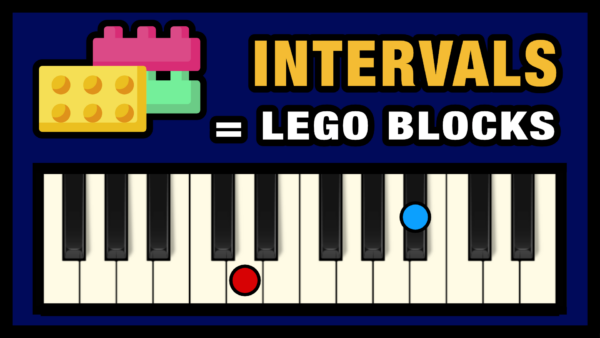 The most important elements of music, are the actual building blocks you use to write it. And that core fundamental ingredient is the intervals you use.
The most important elements of music, are the actual building blocks you use to write it. And that core fundamental ingredient is the intervals you use.
You can think of intervals in music like building blocks, or lego pieces if you want.
Even if there is only a handful unique intervals in music, they can create an infinite amount of variations, emotions and stories of sound, depending on how you use them.
Let me share a quick guide on all fundamental intervals in music, and how I personally label them in terms of core emotion.
The Intervals in Music – Quick Chart
- Minor 2nd (The Tension Interval) = 1 half step
- Major 2nd (The Trilling Interval) = 2 half steps
- Minor 3rd (The Emotional Interval) = 3 half steps
- Major 3rd (The Feel Good Interval) = 4 half steps
- Perfect 4th (The Journey Interval) = 5 half steps
- Tritone (The Devil in Music) = 6 half steps
- Perfect 5th (The Mirror Interval) = 7 half steps
- Minor 6th (The Mystery Interval) = 8 half steps
- Major 6th (The Exciting Interval) = 9 half steps
- Minor 7th (The Jazzy Interval) = 10 half steps
- Major 7th (The Strange Interval) = 11 half steps
- Perfect Octave (The Stability Interval) = 12 half steps
How Intervals are used in Music
You can choose the chain of intervals in a melody, the stacking of intervals in harmonies and chords, the layering, instrumentation, playing styles and so many more creative options you can use to shape your music arrangements with these building blocks of music.
So basically every single part, except percussion, is based on the building blocks of music…the intervals.
Intervals will sound different if you play them going up, going down, or played together in harmony. And when you go beyond 2 part harmony, into chords, you will create even more relationships in your music. Because that is what intervals are, harmonic relationships.
You can also change the color of these relationships by transposing some of your voices in octaves. This is why chord inversions and voicing can sound so completely different even though they technically use the same notes. Because you do change the way the intervals relate to each other over the whole range of notes in your music.
And you open up a whole new dimension of creativity when you see the intervals changing over time, in your arrangement. This is what voice leading is all about.
And as each individual chain of intervals in every single part and instrument in your music changes over time in your composition, the entire harmonic storyline of your music flows like a story. That is when you see the true awesome power of the building blocks of music. The intervals.
